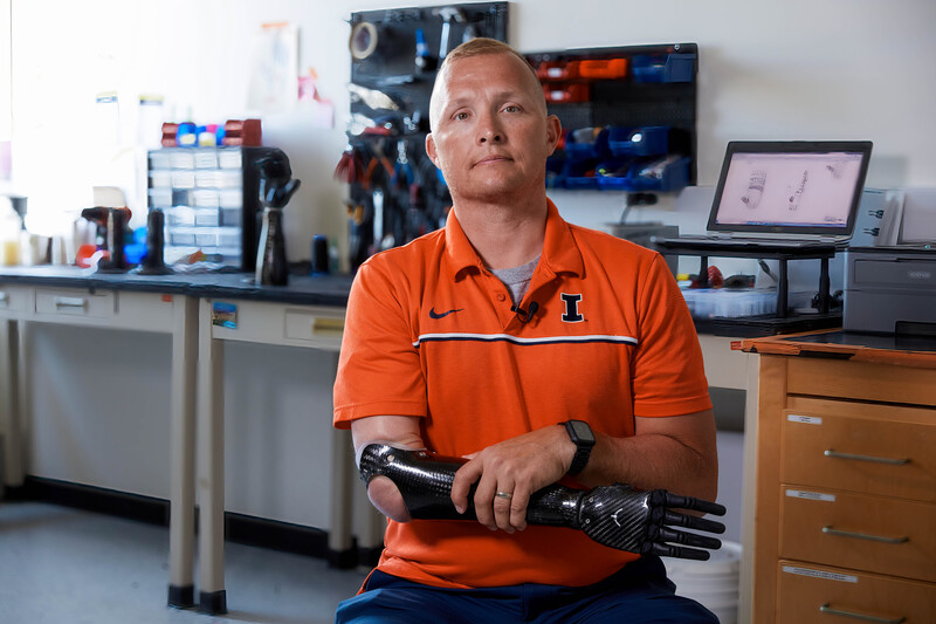Psyonic has developed a Bionic Hand using Formlabs’ additive manufacturing technology.
Formlabs based in Somerville, Massachusetts is a 3D printing technology developer and manufacturer, Psyonic is a US-based prosthetics manufacturer. Psyonic CEO Aadel Akhtar, believes that 3D printing is, “a game changer for not just us as a business, but also for the industry as a whole.” Both companies have taken a further step towards manufacturing lower-cost prosthetics using 3D printing. Often prosthetic limbs are fragile, crude, expensive, and antiquated. Prosthetics are limited in number and according to Psyonic, “they are out-of-reach for 90% of patients who can’t afford advanced prosthetic arms.”
“Earlier this year is the first time I could actually feel touching my daughter’s hand with this prosthetic hand,” said retired Sgt. Garrett Anderson, after military service in 2005, left him requiring a prosthetic.

Psyonic used Formlabs’ Form 3 stereolithography (SLA) 3D printer. The process involved rapid prototyping then was followed by changing iterations and producing parts at relatively low prices and low volume. “We develop advanced bionic limbs that are affordable and accessible to everyone. We would not have been able to create this hand unless we had the manufacturing in-house with Formlabs printers,” said Akhtar.
“Mixing and matching manufacturing methods is extremely important, I think, to startups in general, but especially to Psyonic. There’s no way we could have competed with other prosthetics companies at our size if we had to abide by purely traditional manufacturing,” said Lead Mechanical Engineer James Austin. “Things like CNC machining, and injection molding, the initial costs, especially for trying to prototype things with multiple iterations, would’ve just been far too astronomical for us to do.”
The 3D printed Psyonic Ability Hand
The Ability Hand weighs 490 grams, which is less than the weight of a typical adult human hand. The thumb rotates electrically and manually, and all five fingers can flex and stretch. Utilizing USB-C, the Ability Hand charges in roughly an hour. One charge lasts all day.
The majority of external Electromyography (EMG) direct control systems, linear transducers, and force-sensitive resistors are compatible with the Ability Hand. According to Psyonic, each finger on the Ability Hand can withstand a blunt force hit without breaking, and it is both lightweight and water-resistant.
Users can connect their Ability Hand to the iOS and Android mobile apps from Psyonic to enable their prosthetist to tune it and for users to continuously enhance its grip and use.

Processes behind Psyonic’s 3D printed prosthetics
In addition to 3D printing, the Ability Hand is made by Psyonic using hybrid manufacturing techniques such as silicone injection molding, and CNC machines. The company believes the Ability Hand promises to give patients their previous quality of life and movement.
The 3D printed FDA-registered, Medicare-covered, upper-limb prosthetic enables user feedback to be gathered, followed by internal fast prototyping to enhance design and functionality.
According to Psyonic, using a hybrid manufacturing production approach means the prosthetic can be sold for a reasonable price. In the past, Psyonic estimates that approximately 10% of those requiring a prosthetic could afford it, by using this new approach, the figure has increased to 75%. To produce long-lasting end uses, the company also used new robust and impact-resistant 3D printing materials.
The production of prosthetics through 3D printing
Previously, a full-service, in-house 3D printing program named Galileo for use in orthotics and prosthetics (O&P) offices was introduced by the 3D printed prosthetics firm Protosthetics. The plug-and-play device, Galileo, is made to assist O&P practices in getting over many of the obstacles that have prevented them from adopting 3D printing up until now.
Elsewhere, for amputees in remote parts of Guatemala, the maritime non-profit Island Missions Support has started using a Slice Engineering hotend to create more durable 3D printed prosthesis. The team had previously attempted to produce prosthetics from PETG using Prusa i3 MK3S+ and Raise3D E2 3D printers, but the country’s hot climate caused their material to distort and prints to fail. However, the team is now able to print kid and adult-sized hands and arms, which restore the ability of users to precisely grip ordinary things, thanks to the improvement of the latter with a Slice Engineering Copperhead Hotend.
Nominations for the 3D Printing Industry Awards 2022 have now commenced. Who do you think should make it to the shortlists for this year’s show? Nominate now, the form closes at the end of the month.
To stay up to date with the latest 3D printing news, don’t forget to subscribe to the 3D Printing Industry newsletter or follow us on Twitter, or liking our page on Facebook.
While you’re here, why not subscribe to our Youtube channel? featuring discussion, debriefs, video shorts, and webinar replays.
Are you looking for a job in the additive manufacturing industry? Visit 3D Printing Jobs for a selection of roles in the industry.
Featured image shows the Psyonic Ability Hand. Photo via Formlabs.


